Monday, December 17, 2007
Sunday, December 16, 2007
Tuesday
Matthew will be around if you want to discuss you work before the holiday
Remember the deadline dates in January. Non-submission will be a serious problem.
Tuesday, December 11, 2007
Social Photography Pesentation
Please see the explanation below which will help you to make a presentation which is suitable for showing to a client
The purpose of the presentation is to show the client most of the images that you have taken in order to sell them and this is normally done with music initially and then by going through each picture one by one.
You are required to make a presentation of each session, one for the family and one for the romantic couple.
Logistically it is easier if you can put them together in one PowerPoint presentation with a Blank slide between them that requires a mouse click to proceed.
Make sure that your images are all compressed after you have made the show and that the music files are in the same folder as the ppt. file before you insert the sound.
Each show should have between 15 and 20 pictures and should move along fairly briskly so that it gives a flavour of the sitting. In the real world you would go through the images singly after this with the client so that you can take their order. You could also sell them the show so it is doubly important to compress the pictures to screen resolution to protect your profits.
I am happy to explain how to sort sound and timings etc if anyone is not sure how to do this. Best time for this is when I have your class 5-7pm on Tuesday. Ideal size for ppt images is 1024x768 pixels. Rip the music from CD in windows media player or use an mp3 file.
Any questions? Please ask.
Pauline
Theory Test
Aperture: relative dimensions of f-stops (see below)
Shutter: different types and flash sync speed
ISO: grain and digital noise
Zone:
Grey card, zone scale, development, practical use
Light 1:
Visible spectrum + IR and UV
Colour temperature measurement
Correction filters
Light 2:
Incident, reflection, refraction
Image formation
Lenses:
Focal length
Primes and zooms
Faults, quality and price
Standard lenses for different formats
Format:
35mm
120
5x4
Digital sub-35mm frame magnification
All this information was covered in the Theory classes. You will find links to all these areas on the blog – use the ‘search’ facility at the top left corner.
It’s also covered comprehensively in Langford’s ‘Basic Photography’
Aperture dimensions

f = ‘focae’ and indicates a ratio 1:2, 1:5.6, 1:16 etc, which we shorten to f2, f5.6 and f16, etc.
1:2 means that the diameter of the aperture opening of a given lens is half of the focal length. For a 50mm lens to open up to f2, the diameter of the opening will need to be 25mm.
f4 on a 50mm lens requires the aperture to open as wide as 12.5mm
f4 on an 80mm lens requires the aperture to open as wide as 20mm
f4 on a 28mm lens requires the aperture to open as wide as 7mm
Because the actual diameter opening of f4 varies (12.5mm, 20mm and 7mm) depending on the focal length (50mm, 80mm and 28mm) in the examples above – f4 lets the same ‘brightness’ through, whatever the lens or format.
The same goes for all the other aperture settings – they’re universal.
New Media New Directions

Gillian Wearing - Masks (appearing as her entire family)
Jo Spence - personal photo-therapy
Cindy Sherman - untitled film stills
Nan Goldin - gritty, lo-fi images of the sub-culture
Alison Jackson - look-a-likes
If you like Jerry Uelsmann's work you can find it yourself. I'm not touching it.
Digital Closed Book Exam
The exam for Digital will take place at 10:30am on Monday the 17th December in the Lecture Theatre. This will consist of a 2 page paper with a variety of true/ false, multiple choice and simple answers.
The content will be based on what you have learned in class and what you should already be putting into practice using digital imaging.
Attendance is compulsory, and non attendance will result in a FAIL.
Monday, December 10, 2007
Deadlines
Your submission will also include:
Journey to college sequence
Tungsten/Daylight cross-lit portraits x2
Corporate sequence
The Corporate sequence must be in the form of a Powerpoint presentation, submitted on CD
Additionally, you will produce a personal price-list:
Details of an hourly rate, half-day rate and full-day rate
Prices for print sizes
Prices for digital work
Non-submission at this extended deadline will result in a 'Fail'.
Theory test paper - will take place on Tuesday 15th January in Room 187 at 10.15am
Non-attendance without a doctor's certificate will result in a 'Fail'
Monday, December 3, 2007
CTS Homework Images



 Six Feet Under video on youtube at http://www.youtube.com/watch?v=BVonI5jp5dM
Six Feet Under video on youtube at http://www.youtube.com/watch?v=BVonI5jp5dM
Citroen video on youtube at: http://www.youtube.com/watch?v=D5kD4O2ATJU


CTS Homework for next week
Make notes
Paste in pictures
Do additional research
Try and identify which types of signs are in the ads
Bring your workbook in for group discussion next week
Image Allocation
Donaldson Lucy – yellow pages
Fothinker Amy – six feet under
Granadero Perez Eva – car/robot
Gregory Michael - coke
Harkins Eilidh - tesco
Kavanagh Stephen – yellow pages
Kozak Anna – six feet under
Madsen Louise – car/ robot
McCulloch Jade - coke
McMillan Vicky - tesco
Mugueta Estibaliz – yellow pages
Rodriguez Jesus – six feet under
Schiefler Anja – marlborough
teven Jill - coke
Zatonow Anna - tesco
Monday, November 26, 2007
Corporate Sequence
I'll be in Studio 19 on Tuesday 27th from 1.15pm if anyone wants to see me.
If not then please make sure you DO come to show me something on Tuesday 4th December.
DON'T HIDE AND HOPE IT'LL BE ALRIGHT
Tuesday, November 20, 2007
Calibration

Follow this link to Photobox.co.uk
This screen image should match the print I've given everyone - adjust your own monitor if it doesn't
Monday, November 19, 2007
Colour (not color)

Wikipedia on colour photography
That Russian bloke who invented colour photography in 1905
(The Scots invented everything)
William Eggleston's innovative colour work was promoted at MOMA in 1976 by John Szarkowski, keen to repeat his late sixties successes with Winogrand and Freidlander

William Eggleston - Masters of Photography link
William Eggleston.com
Influenced heavily by the 'epic' photography in The Family of Man exhibition in 1955, Irish businessman John Hinde (an ex Circus performer - a showman at heart) achieved great commercial success with extraordinary, saturated colour postcards - intended to match peoples' memory of their holiday - not the stark, austere post-war reality
John Hinde's Butlins postcards

Tony Ray Jones died from Leukaemia in 1972 at the age of 31 - which is why so few people have heard of him

Martin Parr blog (please read this)
Martin Parr audio interview
More Parr

New Brighton - the seaside town featured in Parr's 'The last resort'
Umberto Eco published a very important book of collected writings in 1985, called 'Travels in Hyper-reality'. Eco discusses the media and the messages they send - and we receive. He's particularly interested in the idea of 'simulated reality' - theme parks, Disneyland and the madness of Las Vegas. Please follow this link and read a synopsis of his thoughts.

Thursday, November 15, 2007
Tutorials Tuesday 20th November
9.15am Elidh
9.30am Jesus
9.45am Lucy
Tuesday, November 13, 2007
Late Assignments for Simone
Monday, November 12, 2007
Digital Imaging – Stationary Assignment hand in
For the people who did not hand in on time, you are looking at a fail unless this work is on my desk before this Friday. You work will be peer assessed by Group A on Monday. Currently in the hall of shame, and running the risk of failing this unit we have:
Lyndsey Fitzpatrick
Siobhan Irvine
Anna Kozak
Vikki Melville
If you have had genuine extenuating circumstances that may prevented you completing the assignment, please inform me (on a Monday or Tuesday) or Matthew ASAP, so that we can help you out.
Please remember that attendance to the peer assessment exercise next Monday the 19th of November is compulsory for all students.
Friday, November 9, 2007
Tuesday 13th Nov - Location Workshop
You know who you are
We'll look at the cross-light reshoots at 10.00am on Tuesday in room 187
Thursday, November 8, 2007
Tutorials: Tuesday 13th Nov - Room 187
9.00am Lyndsey Fitzpatrick
9.15am Vikki Melville
9.30am Vicky McMillan
9.45am Siobhan Irvine
Monday, November 5, 2007
CTS - Monday lecture programme
19th Nov: History 5 - Colour
26th Nov: Medium is the message
3rd Dec: History 6 - New directions
10th Dec: Presentation skills
17th Dec: No lecture
Friday, November 2, 2007
Tutorials Tuesday 6th November
9.00am Michael
9.15am Eva
9.30am Louise
9.45am Siobhan
Tuesday, October 30, 2007
Stieglitz or Steichen?
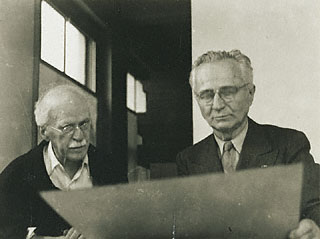
Alfred Stieglitz or Edward Steichen ?
Make your case with approx 1,000 words
Submission: Monday 12th November - 12 noon: lecture theatre 1
History Part 3: Modernism & Propaganda

We covered a lot of ground in this lecture:
Documentary projects used the veracity of photography to publicise and inform:
Mass Observation - UK documentary project 1937 - 1953
Farm Security Admistration - massive US project
Florence Thomson - the "Migrant Mother"
Walker Evans - the Robbie Williams of the FSA
August Sander - Faces of the Twentieth Century (before the Nazis put him in prison)

Wikipedia on Propaganda
Nazi propaganda
Some images have become iconic:

Joe Rosenthal's picture at Iwo Jima
Associated Press counter accusations of fakery
Flags of our Fathers - Hollywood movie with a twist
Team America World Police
William Eugene Smith perhaps the World's greatest photographer

Minamata - Smith never fully recovered from being beaten up while trying to photograph the plight of a Japanese fishing vilage being poisoned by an untouchable and unaccountable chemical industry in the 1970s
The Family of Man exhibition in 1955 (curated by Edward Steichen)
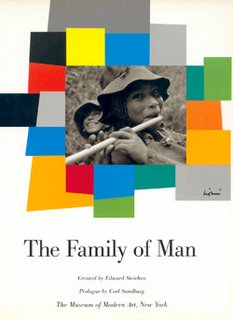
Cross Light Portrait - remake & Corporate recce
Tues 13th Nov - 10.00am Room 187
Corporate sequence Work in Progress discussion:
Tuesday 13th Nov - 1.15pm Studio 19
Please bring your workbook with research, rough pictures and your shooting plans/story strategy
Deadlines are scheduled to help you manage your time. If you miss them, work will mount up.
Monday, October 29, 2007
Tutorials - Tuesday 30th October
9.00am Anna Kozak
9.15am Vikki Melville
9.30am Lyndsey Fitzpatrick
9.45am Stephen Kavanagh
Wednesday, October 24, 2007
Tuesday, October 23, 2007
Portrait Studio Booking
Studio 19 will be open tomorrow (Weds) from 9.00am - and Angela will be around in the afternoon
Brian Griffin: Thursday 25th October
Hawthornden Lecture Theatre
Weston Link
National Galleries of Scotland
The Mound
6pm - no latecomers
Zone

John Blakemore describes each Zone like this:
Zone 0 Featureless black
Zone I Very dark black - no detail
Zone II First sense of separation in dark areas but no detail
Zone III Clear detail in darkest areas
Zone IV Dark hair, shadow in landscape
Zone V Mid-tone (18%) grey, tanned skin, grass or stone
Zone VI Caucasian skin
Zone VII Whites retaining full detail, skin in sunshine
Zone VIII Bright surfaces, whites with little texture left
Zone IX Glaring surfaces, highlights without detail

John doesn't bother with Zone 0 and neither will we
John's Zone book

The Zone system on Wikipedia
The Zone system explained by American nerds
You can take a reflected light reading off anything - if you can visualise what "Zone" it is, and adjust your exposure setting accordingly. I'll explain more soon.
For next Monday, please try to shoot the negatives for a Zone ruler: four stops over and four stops under a Zone V (grey card exposure) of an evenly illuminated, textured surface. You should have 9 frames of increasing density.
(Remember... it won't go wrong if you follow the instructions...)
Monday, October 22, 2007
BW info

Not to be confused with the much newer (and turbo-charged) T-MAX films 100, 400 and 3200 ISO
Here are some of the links to the areas I skirted over:
Silverprint - the best materials retailer (and genuine advice)
Ilford photo click on 'products'
Fuji pro - links to film info pdf + data guide
Kodak pro
Kodak B/W films
Kentmere - excellent papers
Fotospeed - excellent too + lith material specialist
Modern films are brilliant. T-Max 100 & 400 are amazing - but it gets expensive if you use T-Max developer everytime (which you should, or else there's not much point). So, age-old Tri-X in cheap D76 actually works really well if your follow this recipe...
Kodak Tri-X 400 - rated @ 200ISO
Dev 8 mins in D76 1dev+1water @ 20deg C
(Rating Tri-X at 200 ISO deliberately lets more light in, which saturates the silver halide crystals, reducing their size. Cutting the development to 8 mins - a little less than Kodak recommend - compensates for what would otherwise be overexposure)
Also:
Kodak T-Max 3200 - rated @ 1600ISO
Dev 9 mins in T-Max dev 1dev+4water @ 20deg C
(The same grain-calming technique works here too)
Naked vs Nude

This is an enormous subject - worthy of a whole semester to itself. It's impossible to give a complete and balanced overview, but here are a few ideas and links. Please make some notes in your workbook.
Joel-Peter Witkin

Wikipedia on JPW
JPW gallery
8mm
Lois Greenfield

John Berger Notes on 'The Gaze' from "Ways of seeing"
Sally Mann

Laura Mulvey biography
Tuesday, October 9, 2007
Cross light demo

Tungsten preset in daylight: f8 @ 1/8th on 200 ISO

To increase dramatic effect, you can darken the background (and deepen the blue colour) by underexposing - here's what one stop looks like (f8 @ 1/15th)

Shine your tungsten lamp on the model and try to match the same exposure: f8 @ 1/15th - the tungsten lit areas will register as 'correct' colour
Moving the lamp closer will make the effect of the tungsten light brighter

Compare with this portrait shot in exactly the same place in just daylight on daylight preset: f8 @ 1/8th on 200 ISO

Assessment: Tues 23rd October 1.15pm
Required:
One cross lit portrait - printed on A4 paper
Working prints
Exposure details + workbook notes
Corporate sequence assignment
To help with ideas take a look at the photographs that Brian Griffin made of the Broadgate station redevelopment in London

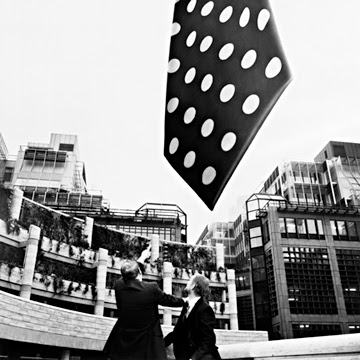
More of Brian Griffin's work is here
Make some notes on your personal reaction to his style
Remember the 'shape' of the storylines we discussed in the movie discussion.
Linear (beginning to end, in chronological order - Classic Hollywood narrative)
Cyclical (joining up the beginning and the end)
Disjointed (beginning somewhere in the middle, before returning to the start)
Slow reveal (releasing the information slowly)
Titles, captions, twists, details...
Deadline for ideas: Tues 23rd October @ 1.15pm in Studio 19
Submission of completed sequence: Tues 18th December
Basics
If you need any help with one or more areas, you might want to look at the appropriate link:
Aperture & Exposure
Exposure & 18% grey card
Lenses & focal length
f stop ratios
ISO
Film
If you know of any links you think are particularly good, please share them by clicking on the 'comment' link next to the pencil icon and post the URL
Monday, October 8, 2007
The Amateur and Modernism

I was very pleased to see so many of you this morning. Thanks. I hope you find the Monday morning sessions useful.
Here are a few links to some of the areas we touched on.
Pictorialism is the peculiar form that photographers with artistic aspirations felt their work needed to take for Photography to be regarded as 'Art'. The leading group called themselves The Photo-secession
A collection of links about Alfred Stieglitz:
Wikipedia on Stieglitz
The Steerage
Gallery 291
We'll return to Edward Steichen in the next lecture. He had some interesting ideas: Steichen quotations
Modernism is when a medium stops pretending to be something it isn't, and celebrates its own strengths. The Museum of New Mexico have a Modernism microsite - which you can explore
Disruptive Technology is an interesting idea about landmark inventions that cause a seismic change
Paul Strand's white fence

EdwardWeston.com
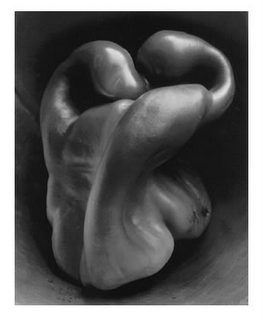
Tuesday, October 2, 2007
Tuesday 2nd October
Pauline will demo the digital back in Studio 19 at 2pm
Location Workshop discussion of Movie 'beginnings and endings' will happen next week
Monday, October 1, 2007
Basics
If you need any help with one or more areas, you might want to look at the appropriate link:
Aperture & Exposure
Exposure & 18% grey card
Lenses & focal length
f stop ratios
ISO
Film
If you know of any links you think are particularly good, please share them by clicking on the 'comment' link next to the pencil icon and post the URL
Snaparazzi
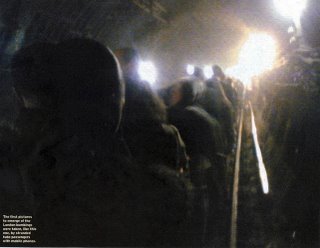
Snaparazzi
We are all photographers now
Daguerre
Fox Talbot
Amateurs
Yale University Photography lecture notes
A very good resource - worth a read, and full of links to areas we will cover in later weeks
Please make some notes in your workbook about Daguerre and Fox Talbot
Tuesday, September 25, 2007
Location Research
Make notes about how it starts - and how it ends: both in terms of the narrative (story), and the images.
This link is a good introduction to Classic Hollywood narrative - where there's a clear beginning, development of characters and plot, and a satisfying end that ties up all the threads
Wikipedia on: Classic Hollywood narrative
Click here for inspiration

BW printing

Thanks to those who came to the print demo - hope you got something useful out of it.
Ilford used to publish leaflets about all aspects of BW darkroom techniques. Now they're all .pdfs on their website. Here's their legendary BW printing instructions
Revision
f2.8 f*? f5.6 f8 f**? f16 f22
2. Which aperture that gives the most depth of field?
3. Complete this list of shutter speeds:
1 sec 1/2 1/*? 1/8 1/15 1/30 1/**? 1/125 1/250 1/***? 1/10000
4. Complete these exposures combinations if f8 @ 1/125 on 100 ISO film
f11 @ 1/**? on 100 ISO
f* @ 1/500 on 100 ISO
f8 @ 1/250 on ***? ISO
5. Which ISO film has the most obvious grain?
100 ISO 200 ISO 400 ISO
6. What are the dimensions of a full-size 35mm frame?
a. 35mm x 50mm
b. 40mm x 40mm
c. 24mm x 36mm
7. What colour light is visible at 700 nanometers?
8. With digital images, what is the optimum dpi resolution for:
a. onscreen use **? dpi
b. print output ***? dpi
Proof or fiction?

Proof or fiction? - follow this link...
Please note your own response to the issues we discussed in your workbook
To remind you:
Robert Capa
The Moonlandings - Real?
The Moonlandings - Fake?
Adnan Hajj (the world's worst photoshopper)





